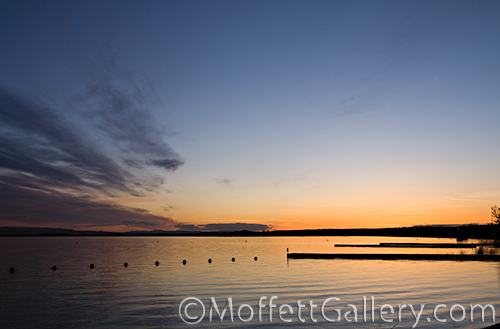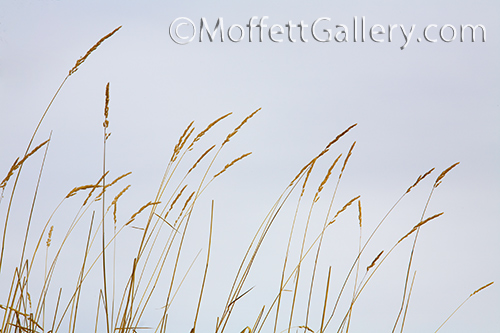by tmoffett | Dec 8, 2010 | Color, Composition, Photographic Technique

Sunset At The Docks
Color. When I was a developing young photographer (I’m still developing, just not so young anymore!), color was not an option. I carried only black and white film with me. I saw things in black and white. I thought that color only complicated matters. I was a simple photographer, therefore I simply shot black and white. Don’t get me wrong, I still love to work in black and white, but I have started to really enjoy working in color as well lately.
Color adds a whole new dimension to photographs. If not careful, it can destroy the impact of a photograph by getting in the way of the composition. It can complicate matters significantly if not used simply. On the other hand, if used correctly color can add power to an image. Photographs where color is the subject excite me! They are powerful.
I think that learning to see in black and white early on in my career has helped my color photography in the latter years. By seeing and photographing tones as opposed to hues, the image already has a strong visual foundation and adding in color then oftentimes will strengthen an already strong image. Working the other way around, seeing hue first, sometimes the image will lack in strength of tonality. At least that is how it is for me.
A great self assignment that can help in color vision is to make photographs where color is the subject. Take out the color and the image loses all impact and meaning. This can be difficult, but is a good exercise to do occasionally. I have given this assignment to one of my photo classes and am excited to see their resulting photographs in the coming days. I am hoping to be inspired to push my vision of color even farther!
by tmoffett | Nov 30, 2010 | Composition, Landscape, Photographic Technique

Against the Sky
Photographs are all around us just waiting to be made. We need not travel to exotic locations to create art (although sometimes it is a nice diversion!), we just need to open our minds (more so than our eyes) to see what is around us. I preach to my students that if they find nice light they will find nice photographs. It is not about where you go but how you see that makes a great image. I have made many photographs in my own backyard.
This image can illustrate this point. On a late autumn morning, these dry grasses going to seed blowing on the hillside were not much to get excited about. However, after watching them for a few minutes, decided that they needed photographed, or really I felt the need to photograph them. As I viewed them against the hillside, they became lost in confusion, but by changing my angle of vision, dropping low and shooting from the opposite side I was able to isolate them against the hazy blue sky. The blue complimented the yellows of the dry grass, the angles provided by the soft wind and the soft light compliments of light overcast skies created a simple, yet interesting composition. It is all about your viewpoint.
by tmoffett | Nov 24, 2010 | Color, Composition, Landscape, Photographic Philosophy, Photographic Technique

Autumn Breeze
One of the keys to great photography is to isolate your subject. So many times I see images that have numerous main subjects. They are confusing to look at because I don’t know what I am supposed to look at. It seems that the photographer has “taken” a picture without thinking before pressing the shutter. When creating a photograph (vrs. taking a picture) I am always thinking while I am working. I work slowly so that every detail is considered. The first thing I consider is what the main subject really is. Are there conflicting subjects? If so, how do I resolve the conflict? Would the photograph be better by eliminating part of it? Maybe there are multiple photographs to be made instead of just one.
The second thing that I consider is how to isolate the subject so that there is no question as to what the viewer is to look at. Do I use a wide open aperture so that the background blurs out or is the background an important element of the image? Can I change my camera angle so as to isolate the subject against a non-distracting background? That was the case in the photograph above. The sky was dark enough to not distract yet had some texture in the clouds for interest. The bluish tint in the sky perfectly complimented the golden color of the dry grasses, making it an ideal backdrop for the photograph.
Taking time to think while photographing can make all the difference between just taking a snapshot and really creating something nice! I would much rather return from photographing with one really nice image than a hundred mediocre snapshots.





Recent Comments